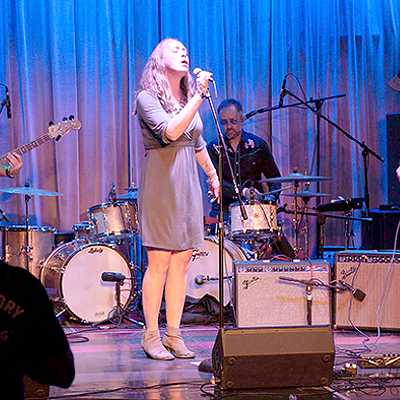He and his mother, Lula, would spend hours on end with their neighbors, crammed into one-room churches, singing the deep old songs that were then called Negro Spirituals. Biographer Jennifer Dunning tells us that at the church in Rogers the children took the baptismal plunge in a shallow grass-choked pond out back while deacons kept an eye out for snakes. Born in 1931, Alvin soon enough took his turn in the redemptive waters. The day of his baptism, the pastor's wife, Sister Hattie Taplin, crooned the mournful "I Been 'Buked and I Been Scorned."
That song, of course, eventually became the music for the opening scene of "Revelations," the 1960 Ailey masterwork that two years ago was named by critics the top modern dance of the 20th century. The piece, an intricate three-part tapestry that the late Ailey used to say was based on his "blood memories" of Texas, will be the centerpiece of all three performances by the Alvin Ailey American Dance Theater at Centennial Hall this weekend. Ailey, bursting onto the dance scene in New York in the late '50s, astonished critics with his inspired melding of African-American vernacular music and movement with the sophisticated gestures of modern dance.
Writing of "Revelations," Ailey said, "This suite explores the motivations and emotions of Negro religious music, which, like its heir, the Blues, takes many forms ... songs of trouble, of Love of deliverance."
The work still delivers the same electric charge 32 years after it was first performed, both for the audience and the dancers themselves. Clifton Brown, a young African-American dancer who hails from Arizona, will dance "Revelations" three times this weekend with the rest of the troupe.
"It's Mr. Ailey's signature work," Brown explained by telephone from a tour hotel in Escondido, Calif. "It's about spirituality, basically about his background in the church. But he felt he could share it with everyone; it's not exclusive. Its spirituality is for everyone. It has everything. It has simple movement but it's very strong. People love it."
Brown himself was not brought up in the black church, though, like Ailey, he grew up the only child of a single mother. His grandmother, Willa, helped raise him in Goodyear, a small town west of Phoenix, and it was she who pointed him in the direction of dance. "She wanted me to have something constructive to do," Brown remembered. "She thought I was too clumsy. She gave me a choice between dance and karate. I went for dance because I liked watching it."
Willa Brown drove her young charge to dance lessons all over the Valley of the Sun, first at Take 5 Dance Academy, then on to Ballet Arizona and to New School for the Arts, a charter school in Scottsdale. In his senior year of high school, Brown won a scholarship to the combined Fordham/Alvin Ailey BFA program.
"At the end of my first year of college, basically I decided I wanted to be performing, rather than go to school and continue training."
The Ailey company is known for its fantastically physical dancers, and the winnowing process Brown went through in 1999 is typical. "It can be competitive," he said modestly. "There's only one audition a year. When I tried out, there were 100 to 150 auditioning for that one slot."
Getting the Ailey job, he said, was "definitely a dream. I knew I wanted to dance with them."
"Revelations" is not the only work on this weekend's programs. Judith Jamison, the dancer who became the company's artistic director on Ailey's death in 1989, has made a point of commissioning works by up-and-coming African-American choreographers, including Ronald K. Brown, who is being hailed as the heir to the Ailey mantle. Saturday night's show is an all-Ailey program, but Friday evening and the Sunday matinee will feature others' works.
Friday night, the troupe will dance "Following the Subtle Current Upstream," a 2000 work by Alonzo King that Brown says combines "classical and ballet vocabulary with new ideas" and incorporates African singing. Jawole Willa Jo Zollar, the founder of Urban Bush Women, contributes "Shelter," 1988, a piece full of African movement, inspired by encounters with the homeless in New York City.
The all-Ailey Saturday night concert will feature another show-stopping early work: 1958's "Blues Suite." "It's another piece about his roots and growing up," Brown said. If "Revelations" is Texas Sunday morning, "Blues Suite" is Saturday night, when the boyish Ailey would watch his neighbors dance to the blues in places like the Dew Drop Inn in Navasota. "The River," from 1970, is set to the music of Duke Ellington and delves deeply into ballet moves, so much so that it has sometimes been danced on pointe by such troupes as the Dance Theatre of Harlem, Brown said.
The final concert reprises "Revelations" and "Following the Subtle Current Upstream." It also, appropriately, features a Ronald K. Brown work, 2001's "Serving Nia." Another choreographer influenced both by the black church and African movement, Brown brought his riveting troupe Evidence to town earlier this month. "Nia" is a Swahili word for "purpose" and the work has "African-based movement and modern also," Clifton Brown said. Set to jazz riffs and African drums, it's about "doing what we need to do."














